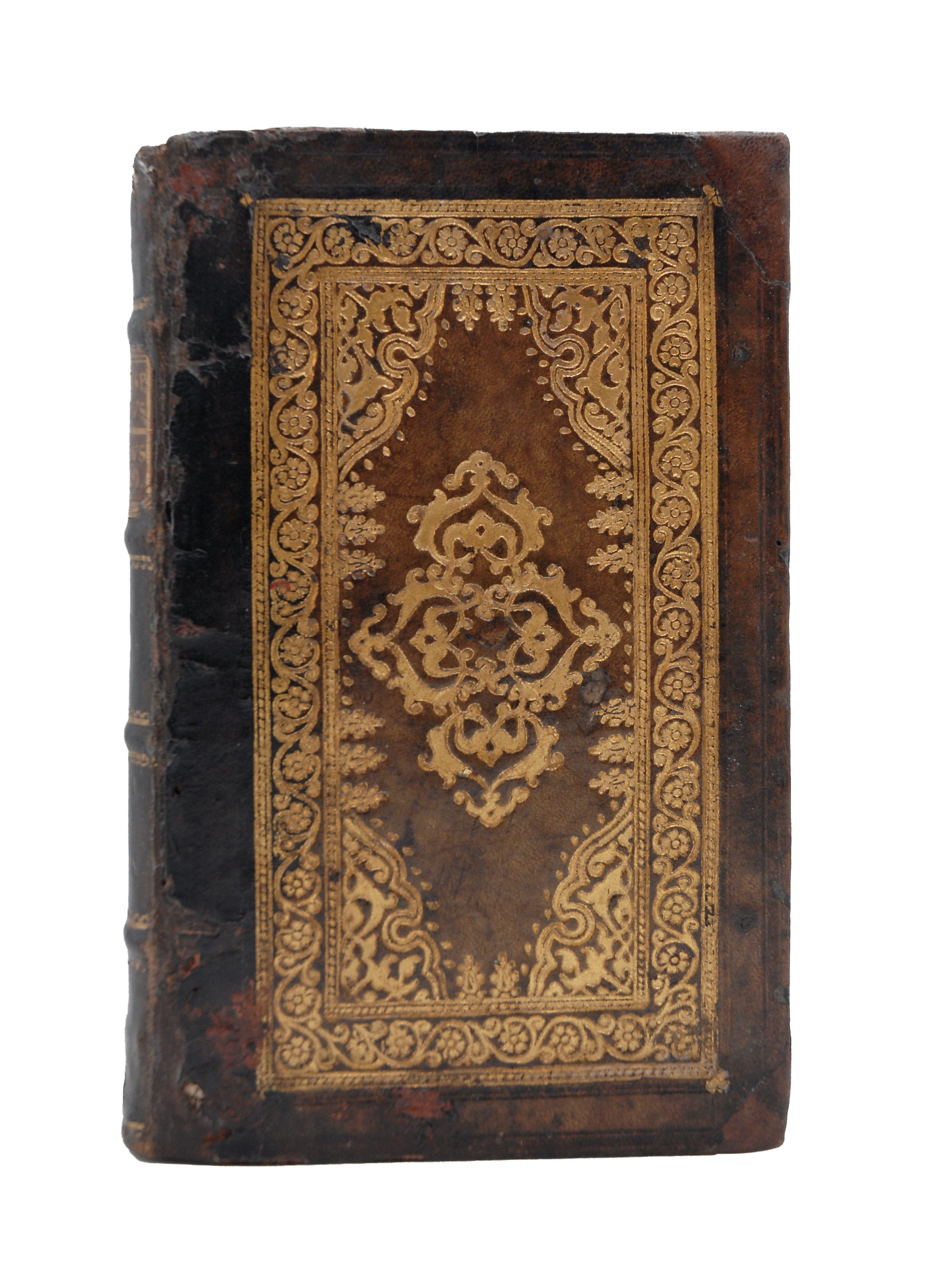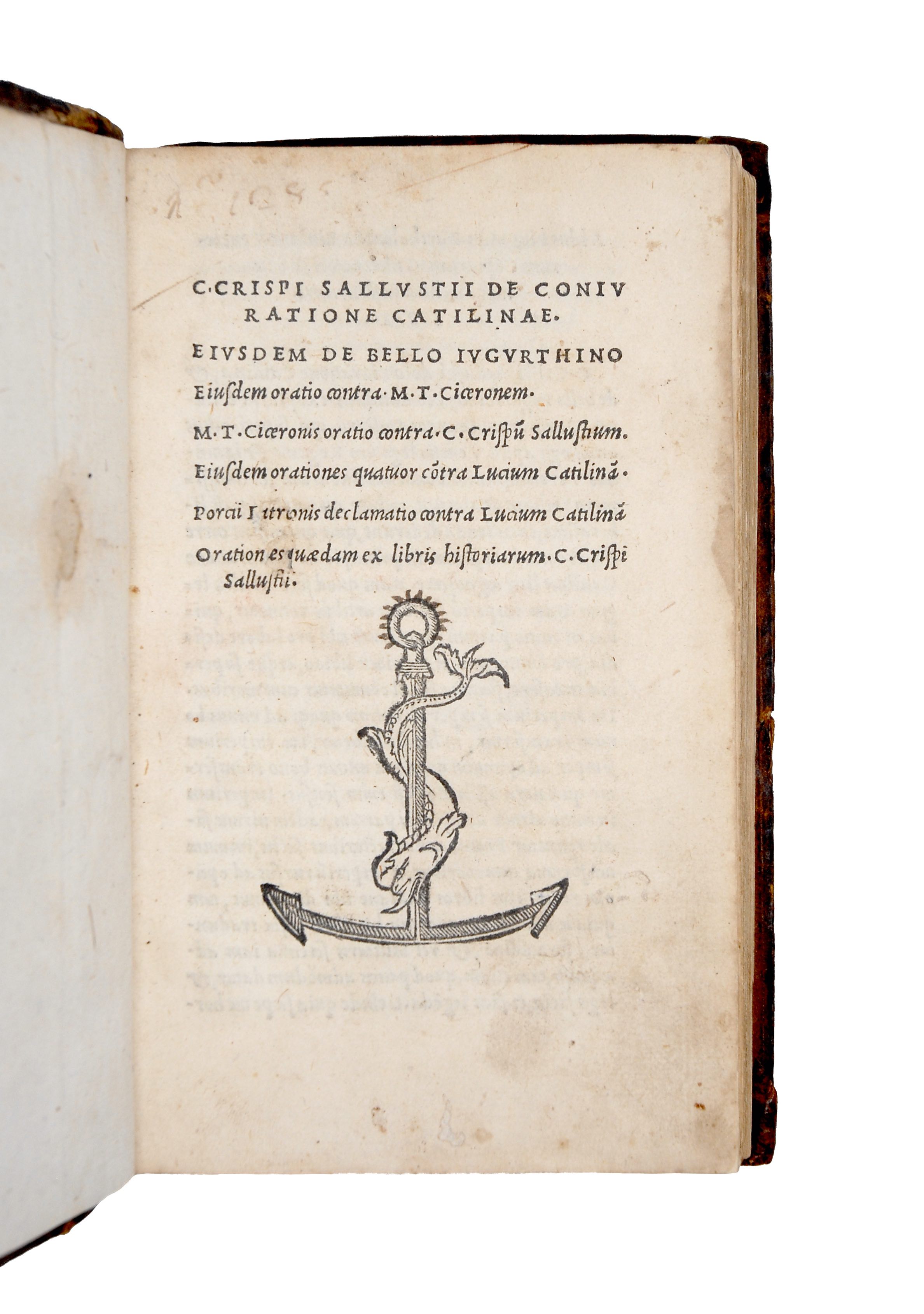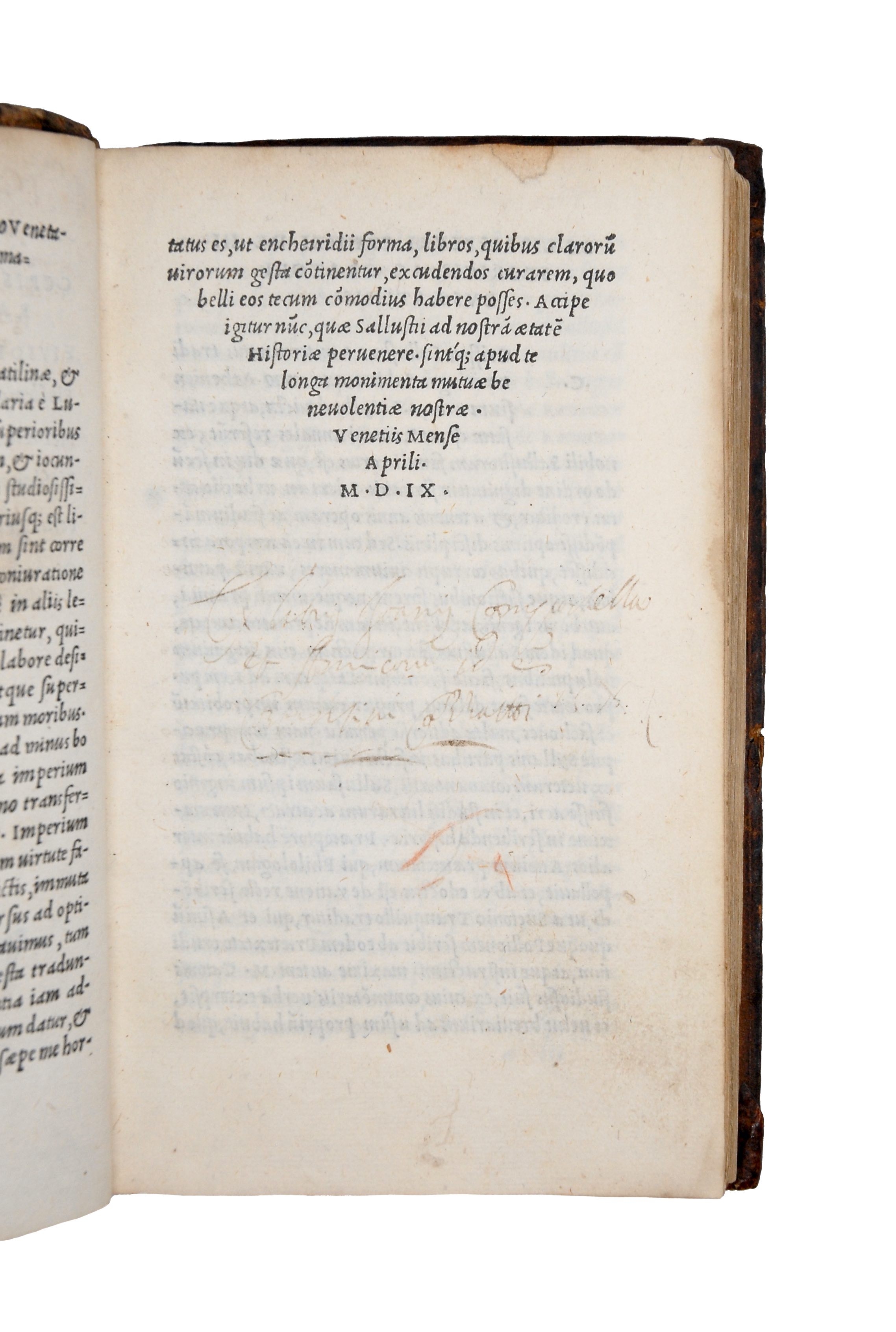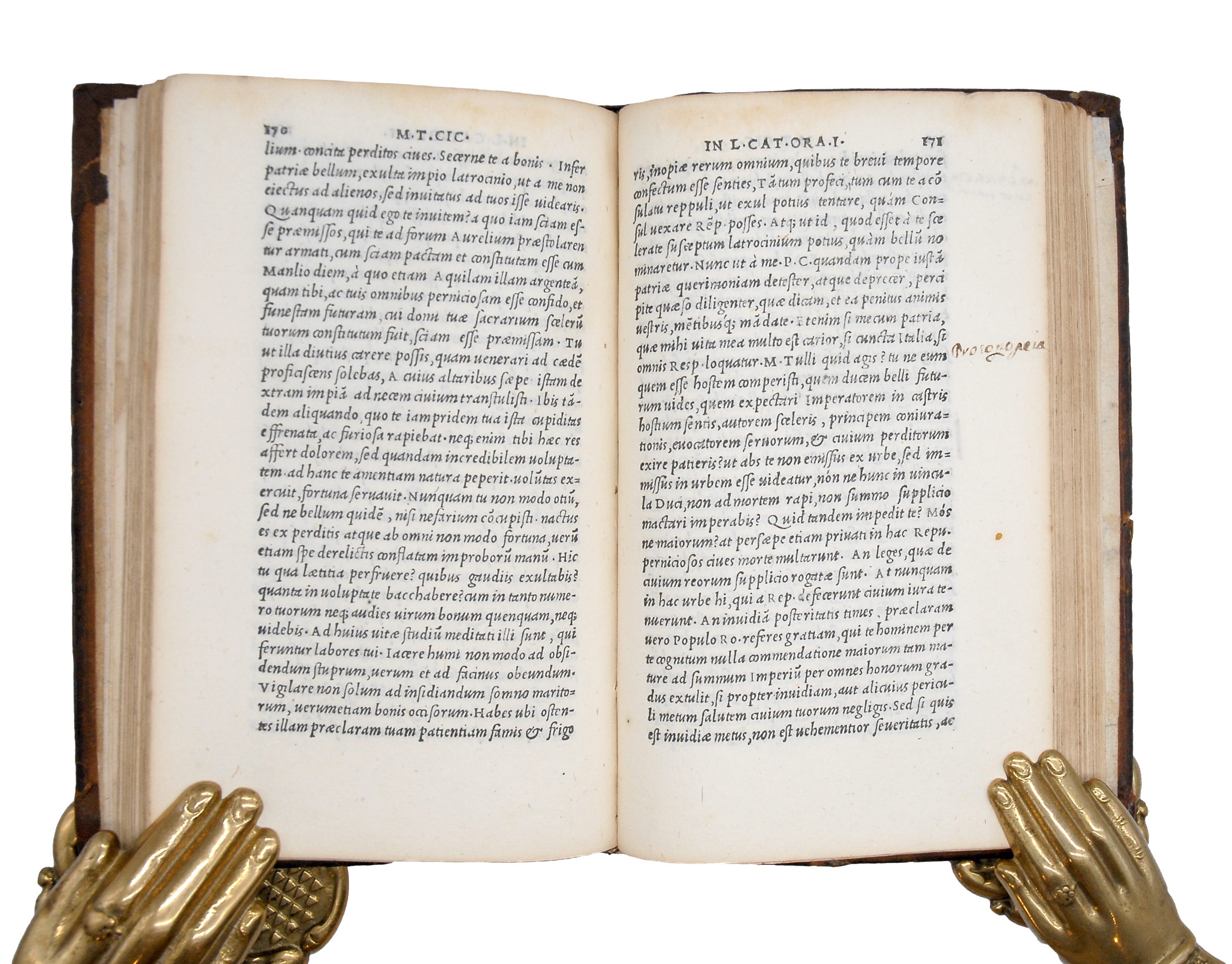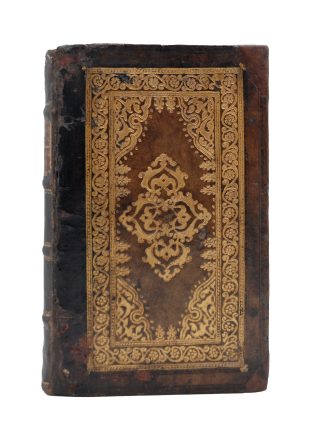SALLUST
De coniuratione Catilinae (…) De bello Iugurthino (…)
Venezia, Aldo Manuzio and Andrea Torresano, 1509£6,500.00
FIRST ALDINE EDITION. 8vo, pp. (xvi) 279 (i). Italic letter, Aldine device to t-p and verso of last. A couple of small early repairs to t-p (one to text without loss) and following leaf, couple of tiny holes to t-p blank, light soiling to margins, old “n° 1285” lightly inked to upper, spot or smudge to blank margin of three ll. A very good copy in handsome contemporary Venetian morocco, covers double blind ruled, tooled in gold to a panel design with tiny gilt leaf tools at corners, outer border with roll of curving flower branches, inner panel with leafy cornerpieces and an ornate centrepiece, small repair to outer corners of upper cover and upper edge of lower, couple of small holes near joints. Spine with gilt ruled raised bands, little holes at head and tail, C17? reback. Early ms. ex libris “Ex libris Joanis Compustella et Amicoru(m) id e(st) Costantini Cossaitti(?) 1551” to aii and verso of last (faded), a few early Latin marginalia to Cicero’s ‘Contra Catilinam’.
Attractive first Aldine edition of the major works of Sallust, in a handsome contemporary Venetian binding. Venice was the first city in Europe to produce gold-tooled bindings, introducing new styles and methods from the Islamic world of the Near East. The gilt design on the covers is stylistically similar to several Aldines, and variations of the fine floral roll appear frequently on Venetian bindings of the period (similar Aldines: see De Marinis II, 1660 and Foot, III, 278: floral roll, see De Marinis II, 1873, 1884, 1894).
This edition was “compiled with great care, and throw[s] considerable light on Sallust” (Dibdin). In the dedication to general Bartolomeo Liviano (1455-1515), Aldus explains that the text of Sallust’ ‘De coniuratione Catilianae’ and ‘De bello Iughurtino’ was edited from two antique manuscripts brought to him from Paris by the humanists Giovanni Lascaris and Giovanni Giocondo. The first work (‘Catiline’s War’) depicts the corruption in Roman policy through an account of Lucius Sergius Catilina’s attempt to overthrow the Roman Republic in the year 63 BC. The second (‘Jugurthine War’) records the war against Jugurtha in Numidia from c. 112 to 105 BC, exploring the party struggles that arose in Rome and introducing the rivalry between Marius and Sulla for the first time. This edition also includes Cicero’s Catilinarian orations, eight orations by Sallust from his larger work ‘Historiae’ and a series of works today considered spurious. These are: an invective upon Cicero (‘Oratio contra Ciceronem’) attributed to Sallust, Cicero’s response (Oratio contra Sallustium), and an invective upon Catilina attributed to the rhetor Marcus Porcius Latro.
Gaius Sallustius Crispus (86-35 BC) was a Roman historian and politician, and his works are the oldest surviving historical texts in Latin that can be attached to a known author. An ‘homo novus’ born to a plebeian family, he was a partisan of Caesar during the Civil War of 49–45 BC, an opponent to the old Roman aristocracy and a critic of the moral decline of Rome. Sallust was influenced by the Greek Thucydides and he is the first Latin historian to delineate the characters of historical figures and to explain the connections and meaning of historical events.
This copy bears an early ex-libris of “Joanis Compustella” (likely the Italian ‘Giovanni Compostella’) and his friends. The Compostella family was an ancient and noble family of Bassano (a city not far from Venice), originally from Spain and known in the Veneto region since 1175 (Enciclopedia storico-nobiliare italiana, Vol II, 1981, p. 520).
USTC 854230; EDIT 16 CNCE 37431; Adams S139; BM STC It. C16, p. 599; Graesse VI, p. 237; Brunet V, p. 84; Dibdin II, p. 383; Renouard 57:3.In stock


